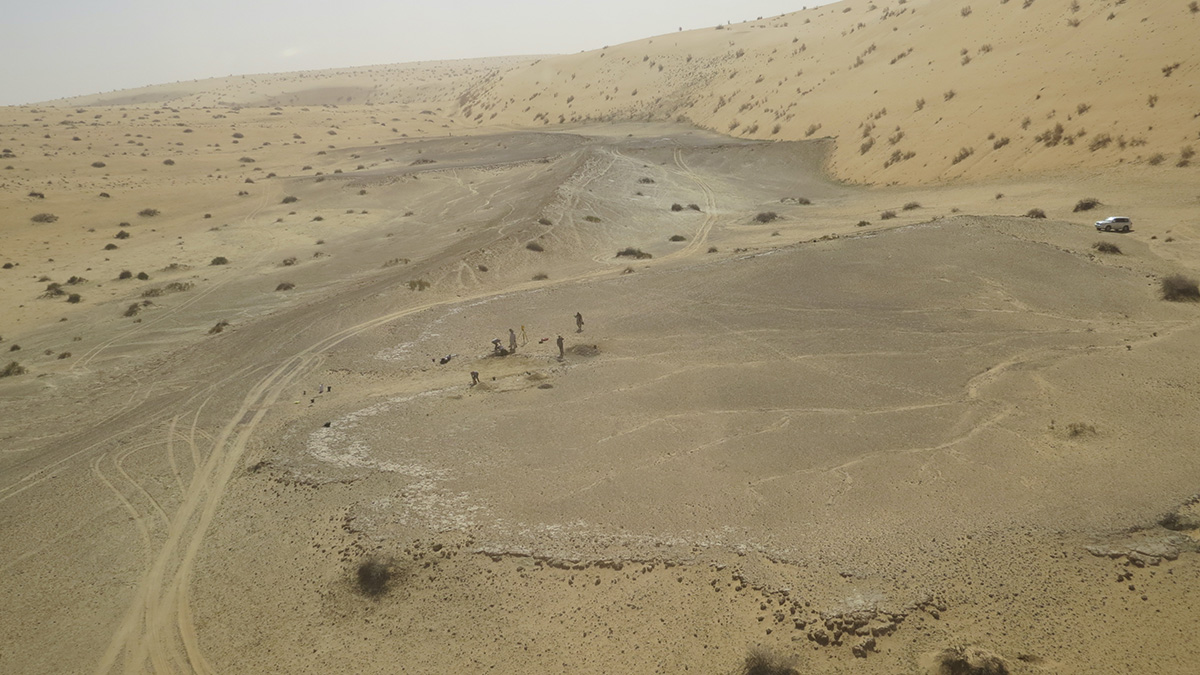Hand axes, hippo bones, and a stack of ancient lake beds show that arid Arabia experienced intervals of humid weather, spurring pulses of human migration over the past 400,000 years.
Saudi Arabia
Posted inNews
Magnetic Surveying Reveals Hidden Ancient Buildings and Streets
Buried buildings subtly distort natural magnetic fields, providing a magnetic surveying team with clues that helped archaeologists map an ancient city.
Posted inResearch Spotlights
What Causes Flash Floods in the Middle East?
Researchers zero in on the large-scale meteorological processes driving extreme precipitation events in the hot, arid desert region.
Posted inNews
High Smog Levels Seen in Mecca During the Annual Pilgrimage
Surveys of air quality show that smog and other pollutants in Islam’s holiest city during the Hajj are among the worst in the world, prompting the Saudi government to look for ways to clear the air.




